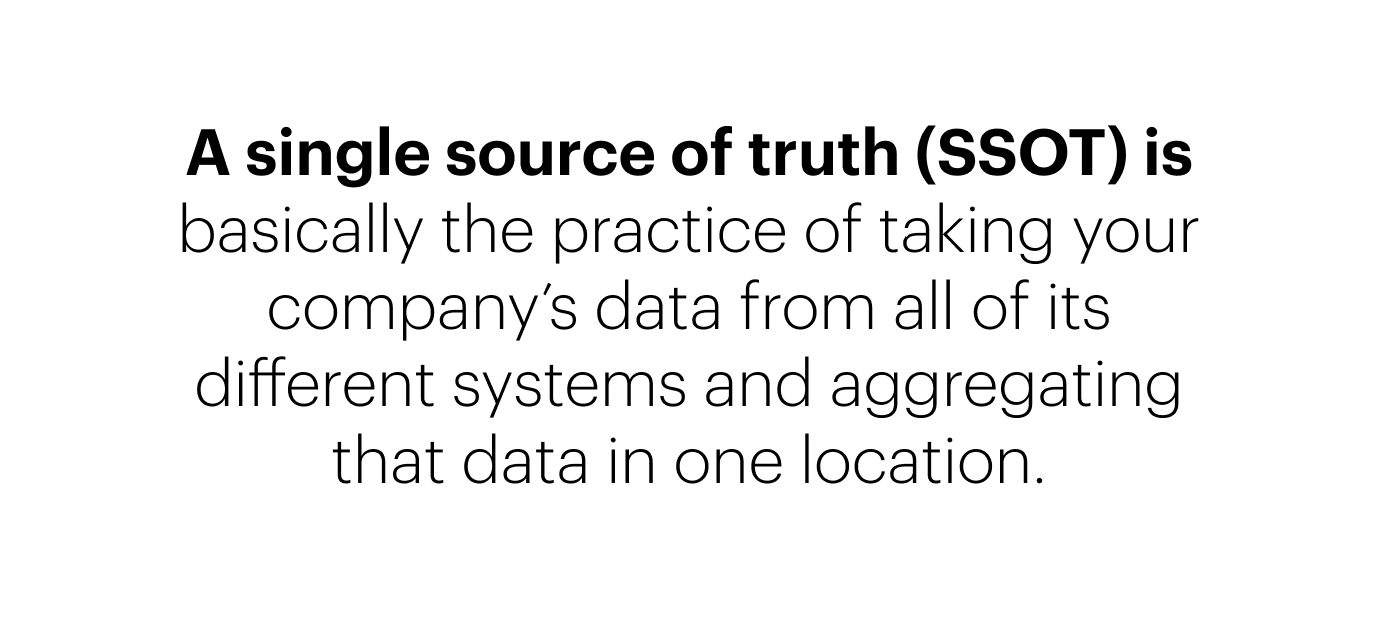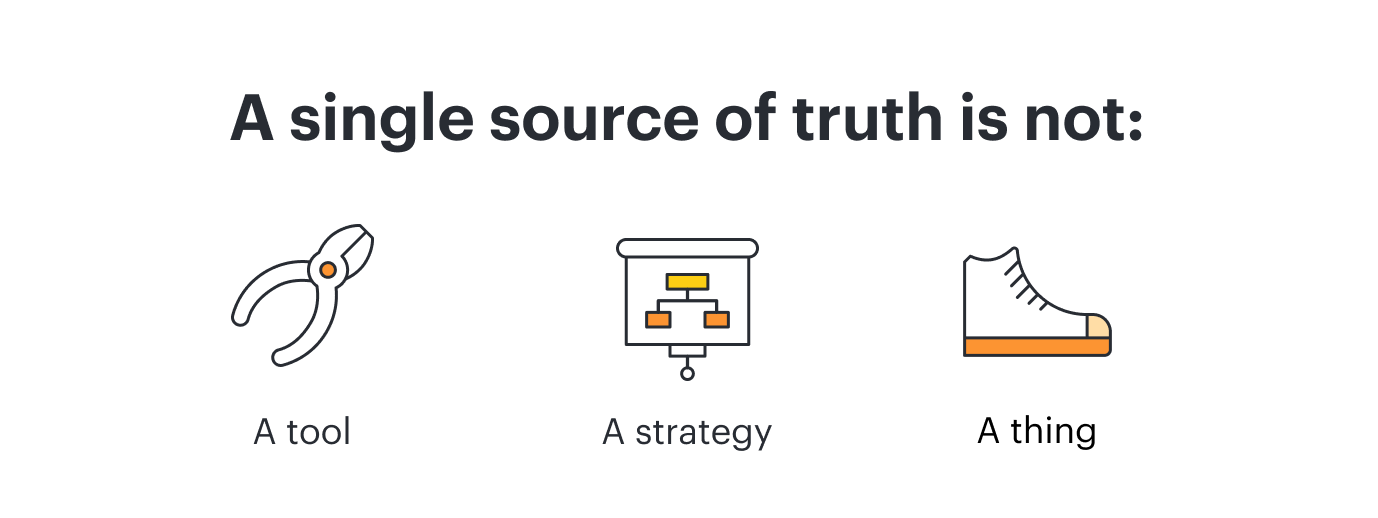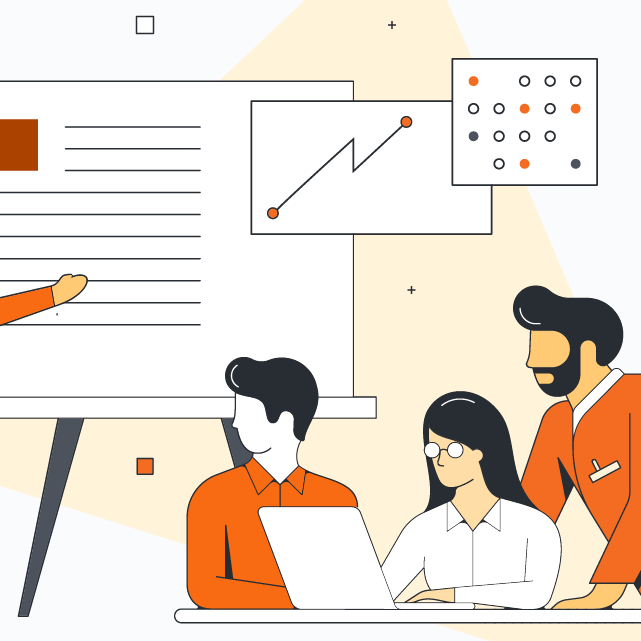
A single source of truth: Why you need one for team processes
Reading time: about 7 min
Since 2020, more companies have had to find new ways to do business to accommodate hybrid teams with employees working remotely and onsite. With team members spread out in various locations, managers face the challenge of keeping the team focused on the same goals, using the same processes, and following the same procedures.
To keep everybody on the same page, you need to make sure that all processes, procedures, styles, branding guidelines, etc., are well documented and up to date. Then you need to be sure that your team has access to these documents no matter where they are.
For example, let’s say that the colors representing your company’s brand have changed. These changes are communicated to the entire company, but the document that describes and outlines the changes is only available on a server that the marketing team can access. This makes it difficult for members of other teams to get updated branding information they need for developing application interfaces, user documentation, websites, etc.
You could send a copy of the updated document to the people who need it, but then you end up with multiple copies in multiple locations. When updates are made to the original document, those changes do not make it into the various copies, and it is difficult to determine which document is the correct version. So you might end up with different teams using outdated logo designs, color schemes, fonts, and so on.
What you need is a way for everybody in your company to be able to easily access the information they need. In other words, you need a single source of truth.
What does a single source of truth mean?
A single source of truth (SSOT) is basically the practice of taking your company’s data from all of its different systems and aggregating that data in one location. The idea is to make all of your company’s data and knowledge accessible from a common reference point.
Setting up a SSOT can help you to avoid the confusion that comes from having multiple versions of the same document living in multiple locations. And it ensures that all team members have easy access to the most current and up-to-date information they need to get their work done.

What a SSOT is not
As you gather information and determine how to make it available to the people who need it, it might help if you understand what a SSOT is not:
- It’s not a tool or a specific, standardized framework that you can integrate into your system.
- It’s not a specific strategy that you might use to gain business insights and analytics.
- It’s not a thing. Instead it’s more like a state of being.

How does SSOT work?
Placing everything in a single location makes it easier to identify duplicate information and determine which files are correct and which can be archived or deleted. In addition, it’s easier to identify and store previous versions so you can access them if needed.
To do this, you need to know where all of your data is, where the data was collected from, if the data source is reliable, and which version is the most complete. There is not a standard procedure for setting up a SSOT, but you can use the following as a guideline:
- Start by gathering, selecting, and prioritizing the information that is most important for your employees and stakeholders.
- Ensure that the information is complete, valid, and comes from trusted sources. Do this by making sure that each piece of information has at least one owner that that people can contact as needed.
- Componentize the information. Most information is written linearly, with intertwining and overlapping ideas. It can be difficult to understand a small part of linear information without its surrounding context. Componentizing the information means that you create chunks or building blocks that are independent of the surrounding context. A component of information can be large or small. For example, the steps you need to complete as you work through a process are considered as one component. Breaking up the steps into separate components would make no sense.
- Eliminate redundancy. It’s easier to identify similar or duplicate information when the information is independent of the surrounding context. Then you can decide whether the similar data is needed and should be kept. For example, keeping older versions of a document in case you need to revert to them later. In addition, you need to determine if data is obsolete and should be discarded.
- Reuse data without making it redundant. Instead of copying and pasting information, you should reference it or link to it. For example, if you need to look at your documentation style guide, don’t download a copy to your hard drive. That creates a copy that won’t be updated the next time the official document in the SSOT is updated.
What are the benefits of having a single source of truth?
A SSOT gives your employees access to relevant, standardized data across the organization. It’s like bringing together different departmental silos and connecting them to create a clean, consolidated, organized, and secure source of knowledge. Other single source of truth benefits include:
- Reduces or eliminates human error such as duplicate data entries, version control issues, incomplete or inaccurate data, etc.
- Improves data quality and integrity because data silos are connected.
- Gives all stakeholders and team members role-appropriate access to real-time data.
- Helps management and executives to make better and more accurate business decisions because they don’t have to sort through multiple data sources.
- Keeps processes consistent across departments and multiple teams.
- Consistency helps new team members learn processes faster making onboarding go more smoothly.
- Process consistency also helps you to set up a system for identifying bottlenecks and areas that need to be refined or improved.
- Ensures that all teams and stakeholders are aligned and working toward the same goals.
Setting up a SSOT is critical for decision-making, addressing problems, and communicating company-wide policies and procedures. When you can trust that your information is accurate and current, your teams can spend less time searching for data and more time analyzing the data.

The key to a single source of truth for processes
Storing your process documents in the cloud is the easiest way to ensure that anybody who needs them can access them at any time from any location. Even better, you can create, manage, and collaborate on process documents in the cloud.
As we’ve mentioned, a SSOT is not a tool, but there are several cloud-based documentation tools you can use to create and store your process documents (Google Drive, ONLYOFFICE, MS Word Online, etc.). It makes sense to create your documentation with cloud-based tools and store them in the cloud because:
- The tools can be accessed at any time and from any location.
- Documents stored in the cloud can be accessed at any time by your team members no matter where they are located in the world.
- Team members can open and collaborate on the same document without being in the same room or onsite at the same location.
- Modifications and updates are made in real time, meaning that everyone always has access to the most current version.

You might also want to consider using visual collaboration software like Lucidchart and Lucidspark. These applications can help you document processes and brainstorm ideas in a visual way. Visual documents are generally easier for people to read and understand. People also can remember and recall visual information for a longer period of time than they can with text alone. Just like text documents, visual documents, such as process flows, can be worked on and updated in real time.

Learn more about using Lucidchart to create a single source of truth.
Read nowAbout Lucidchart
Lucidchart, a cloud-based intelligent diagramming application, is a core component of Lucid Software's Visual Collaboration Suite. This intuitive, cloud-based solution empowers teams to collaborate in real-time to build flowcharts, mockups, UML diagrams, customer journey maps, and more. Lucidchart propels teams forward to build the future faster. Lucid is proud to serve top businesses around the world, including customers such as Google, GE, and NBC Universal, and 99% of the Fortune 500. Lucid partners with industry leaders, including Google, Atlassian, and Microsoft. Since its founding, Lucid has received numerous awards for its products, business, and workplace culture. For more information, visit lucidchart.com.
Related articles
Documenting processes for hybrid teams
In this blog post, we will learn why process documentation is important, and how to document your own, step by step.
Using the Lucid Visual Collaboration Platform as a single source of truth
See our list of tips and features to help you get the most out of the Lucid Visual Collaboration Platform and make it a place where you and your team can go to find up-to-date documentation.
